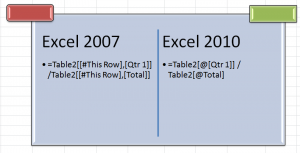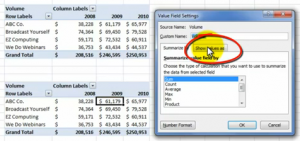This is the second and concluding part of this series where I demonstrate how to use Structured Formula References when referring to Excel Tables.
Key Points Covered
- The difference between Structured Formula References in Excel 2007 and Excel 2010
- How to Edit Structured Formula References
- How to Write Structured Formulas using the new Formula AutoComplete drop-down menu
Watch My Video Tutorial Now
Watch Video in High Definition on YouTube
Click on this link to watch this Video in High Definition on my YouTube Channel – DannyRocksExcels
Go to Part 1 in this Series of Video Tutorials
Visit My New Secure Online Store
I have just published 6 New Products and opened a new, revised, secure online shopping website. Take a look at: http://shop.thecompanyrocks.com





